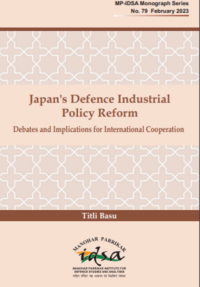Cooperation Among Maritime Security Forces: Imperatives for India and Southeast Asia
The end of the Cold War witnessed a realignment of equations amongst states to adapt to the changed world order. Within its ‘Look East’ policy, India initiated an economic engagement with its extended eastern neighbourhood to generate political trust and eventually forge multifaceted bonds. Due to the salience of Southeast Asia in geo-strategic terms, cooperation among maritime security forces has lately become imperative to respond to transnational security threats and realise common politico-strategic objectives.
- Gurpreet S Khurana
- April 2005













